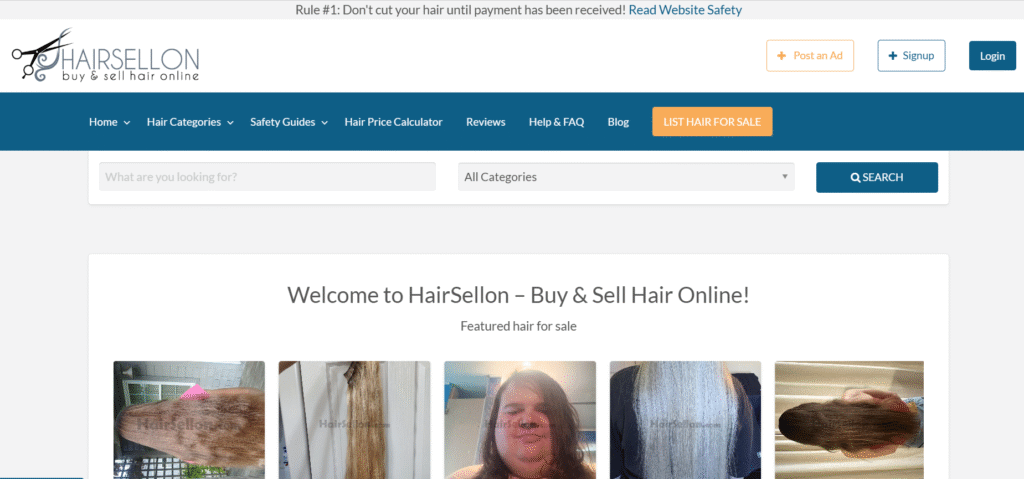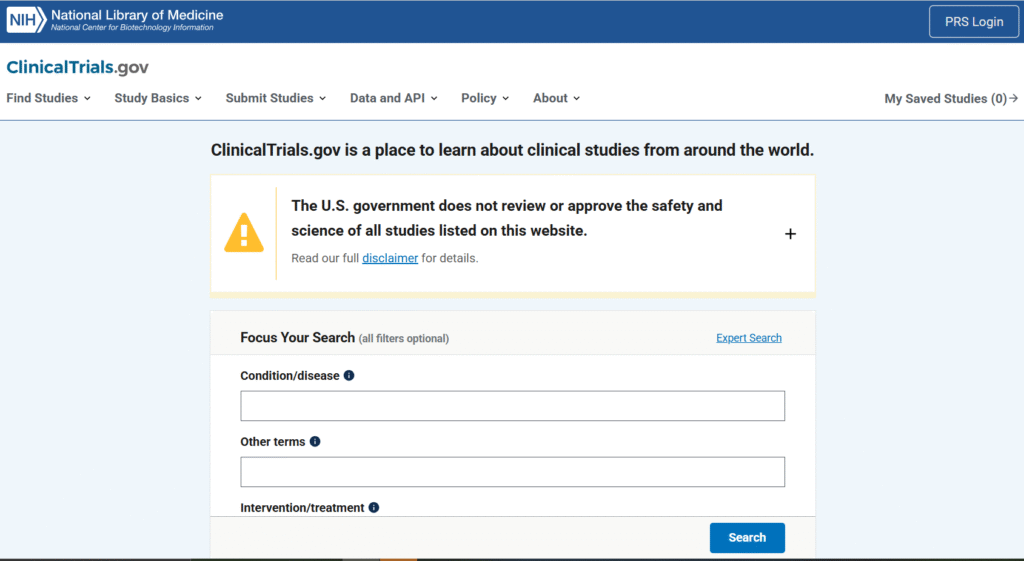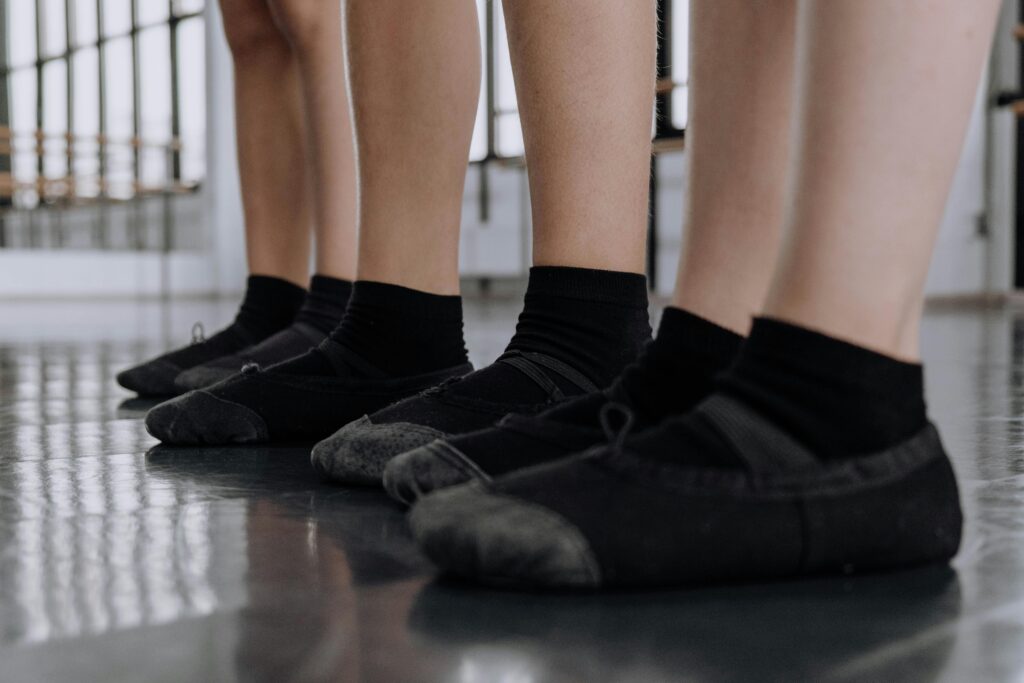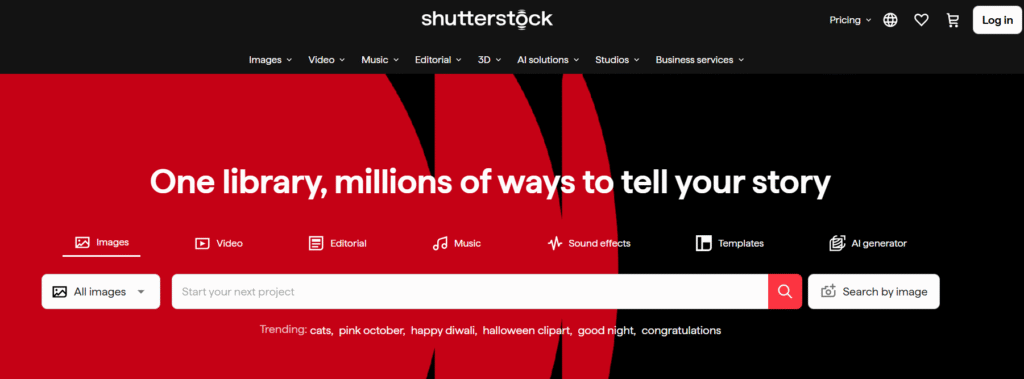20 Strange Ways To Make Money (That Actually Work)

Look, I’m not here to tell you about the same old freelancing gigs or dropshipping schemes you’ve heard a million times before.
If I had a dollar for every time someone suggested “start a blog” or “become a virtual assistant,” I’d probably be sipping margaritas on a beach somewhere instead of writing this 🙂
But here’s the thing: the most interesting money-making opportunities are usually the ones people think are too weird to work. Spoiler alert, they do work.
As someone with a master’s in finance, I’ve studied enough market inefficiencies to know that where most people see “strange,” smart entrepreneurs see “untapped opportunity.”
So buckle up. We’re about to explore 20 legitimately bizarre income streams that actual people use to pad their bank accounts.
Some will make you laugh; others might make you cringe, but all of them have one thing in common: they actually pay.
20 Strange Ways To Make Money
The best side hustles aren’t always the obvious ones.
Sometimes, the most overlooked income opportunities are hiding in plain sight, disguised as things so weird that most people dismiss them without a second thought.
That’s their loss and potentially your gain.
1. Become A Professional Sleeper

Ever had someone tell you that sleeping on the job is bad? Well, they clearly haven’t heard about professional sleep testing.
Companies and research institutions will literally pay you to catch some Z’s while they gather data on sleep patterns, mattress quality, or the effects of different sleeping environments.
Sleep study centres, hotel chains testing new bedding, and pharmaceutical companies researching sleep aids all need real humans to test their products.
We’re talking anywhere from $100 to several thousand dollars, depending on the study’s length and complexity.
Here’s how to get started:
- Search for paid sleep studies on platforms like ClinicalTrials.gov
- Check with local university hospitals and private research labs
- Monitor the Sleep Foundation website for opportunities
From a financial perspective, this is what we call “passive income with benefits.”
You’re literally getting paid to do something you’d be doing anyway (sleeping), except now you’re contributing to scientific research.
The hourly rate, when you break it down, can actually beat many traditional part-time jobs.
The catch? You’ll need to be generally healthy, follow strict protocols (like avoiding caffeine before studies), and be comfortable sleeping in unfamiliar environments with monitoring equipment attached.
But if you’re a good sleeper and don’t mind a few wires, this could be your dream gig. Pun absolutely intended.
2. Sell Your Used Toilet Paper Tubes
Before you laugh this off, hear me out. The crafting community is massive, and they’re hungry for supplies that most people throw away without thinking twice.
Empty toilet paper rolls are a goldmine of material for DIY enthusiasts, teachers, and eco-conscious gardeners.
These humble cardboard tubes get transformed into art projects, classroom decorations, seed starters, and even small pet toys.
The demand is real, and the supply chain is literally sitting in your bathroom right now.
The business model is simple:
- Collect clean, intact cardboard tubes from your household
- Bundle them in quantities of 50, 100, or 500
- List them on eBay, Etsy, or Facebook Marketplace
- Ship them out and watch the passive income roll in
One seller I researched was moving 500 tubes monthly at $15-20 per bundle. That’s $180-240 annually from literal trash.
The profit margin approaches 100% since your only costs are collection effort and shipping materials.
FYI, if you want to scale this up, reach out to offices, schools, or apartment complexes.
They generate massive quantities of this “waste” and would probably be happy to have someone haul it away.
You’re solving their disposal problem while creating your revenue stream.
That’s what financial folks call a win-win scenario.
3. Start Beekeeping And Sell Honey
Urban beekeeping isn’t just a hipster trend anymore; it’s becoming a legitimate small business opportunity with surprisingly strong margins.
Raw, local honey commands premium pricing, especially when you market it correctly to health-conscious consumers and local food enthusiasts.
The startup costs range from $300-500 for basic equipment (hive, protective gear, and your first bee colony), but the ROI can be impressive.
A single healthy hive can produce 30-60 pounds of honey annually.
At $10-20 per pound for locally sourced honey, you’re looking at $300-1,200 per hive per year.
Getting started requires:
- Basic training through local beekeeping associations or online courses
- Initial equipment investment (hive boxes, smoker, protective suit)
- A suitable location (even rooftops work in urban areas)
- Understanding of local regulations and permits
Beyond honey sales, diversification opportunities include beeswax candles, pollen, propolis, and even bee removal services for neighbours dealing with unwanted swarms.
Some beekeepers also rent their hives to farmers for pollination services, adding another revenue stream.
The financial beauty of beekeeping is its scalability. Start with one or two hives to learn the ropes, then expand as your knowledge and confidence grow.
It’s also remarkably recession-resistant; people always need food, and local honey holds its value well during economic downturns.
4. Sell Your Hair

Your hair is literally an appreciating asset if you treat it right.
The global hair extension market is worth billions, and virgin hair (untreated, uncolored, undamaged) commands serious premium pricing.
The market breakdown:
- 10-12 inches: $100-$300
- 14-20 inches: $300-$800
- 20+ inches: $800-$1,500+
Factors affecting value include thickness, natural colour (blonde and unusual colours fetch more), and condition.
Think of your hair like a commodity investment; the better you maintain it, the higher your eventual payout.
Popular marketplaces include HairSellon.com, BuyandSellHair.com, and Etsy.
The key to maximizing value is patience and documentation. Take clear photos showing length, thickness, and texture.
Measure accurately. Bundle it properly after cutting.
Here’s the strategy: Avoid heat styling, chemical treatments, and harsh products. Regular trims eliminate split ends.
Essentially, you’re “farming” your hair like a crop, nurturing it for maximum harvest value.
The average hair growth rate is six inches annually, so plan your timeline accordingly.
5. Compete As A Professional Eater
Competitive eating isn’t just about stuffing your face; it’s a legitimate sport with real prize money, sponsorship deals, and media opportunities.
Top competitive eaters pull in six figures annually through contest winnings, appearance fees, and brand partnerships.
But let’s be real, you’re not going to wake up tomorrow and beat Joey Chestnut at a hot dog contest.
This requires training, strategy, and understanding your body’s limits.
Professional eaters practice stomach expansion techniques, jaw strength exercises, and strategic eating patterns.
Starting small makes sense:
- Local restaurant food challenges (free meals plus bragging rights)
- Regional eating contests with cash prizes
- Building a social media following, documenting your journey
- Eventually, working toward Major League Eating-sanctioned events
The financial opportunity extends beyond contest prizes. A compelling personality combined with eating prowess translates well to YouTube, TikTok, and Instagram.
Ad revenue, sponsorships, and Patreon supporters can collectively generate sustainable income.
However, I’d be irresponsible not to mention the health considerations. Competitive eating carries risks, including potential long-term digestive issues.
Approach this like any extreme sport, with proper understanding and medical awareness.
6. Be A Human Statue
Street performance art, specifically living statues, combines creativity, physical endurance, and entrepreneurial hustle.
Good performers in high-traffic tourist areas regularly pull in $100-300 per day during peak seasons, sometimes more.
Your success hinges on three factors: location, presentation, and audience engagement.
A mediocre statue in Times Square will outperform a great statue in a quiet suburban park. Choose your spot wisely.
Investment requirements:
- Quality costume or body paint ($50-200)
- Props relevant to your character
- Portable speaker for ambience (optional but effective)
- Performance permits (varies by city)
The psychology behind tipping is fascinating. People pay for the surprise factor (when you suddenly move), the photo opportunity, and the sheer commitment required to stand motionless for hours.
Your tip jar should be visible, and strategic “movements” when crowds gather maximize donations.
From a financial planning perspective, treat this as seasonal work.
Summer and holiday seasons bring tourist crowds; winter might require pivoting to indoor events or festivals.
Smart performers diversify by booking private events, parties, and corporate functions during slow periods.
7. Be A Test Subject

Clinical trials and research studies represent one of the most straightforward ways to monetize your time and health data.
Depending on the study’s scope, compensation ranges from $50 for a few hours to $10,000+ for longer pharmaceutical trials.
Medical research needs healthy volunteers just as much as specific patient populations.
Universities, pharmaceutical companies, and consumer brands constantly run studies testing everything from new medications to user experience with apps and gadgets.
Study types and typical pay:
- Simple surveys and questionnaires: $10-50
- Product testing (cosmetics, apps, furniture): $50-500
- Overnight sleep studies: $100-500
- Multi-day pharmaceutical trials: $1,000-10,000+
Find opportunities through ClinicalTrials.gov, ResearchMatch, and university research departments.
Local teaching hospitals often maintain databases of potential participants.
The financial calculus is simple: assess the time commitment, any risks involved, and the compensation offered.
Some studies offer one-time payments; others compensate per visit. Factor in travel time and any preparation requirements when evaluating opportunities.
Ethical consideration matters here. Research participation should never compromise your long-term health for short-term cash.
Read protocols carefully, ask questions, and understand what you’re committing to before signing consent forms.
8. Taste Food For A Living
Professional sensory analysts do exist, and they’re paid to eat, chew, smell, and provide detailed feedback on food products before they hit store shelves.
This isn’t gorging yourself; it’s methodical evaluation requiring a sophisticated palate and analytical communication skills.
Food manufacturers, beverage companies, and research institutions employ tasters to assess everything from flavour profiles to texture consistency.
Compensation varies from hourly rates ($15-30) for local taste panels to salaried positions at major food corporations.
Breaking in requires:
- Applying to food companies’ consumer research panels
- Checking university food science programs for studies
- Responding to local market research companies recruiting tasters
- Building credibility through consistent, detailed feedback
The ideal candidate has a sensitive palate, can articulate subtle differences, and provides reliable, consistent feedback.
You don’t need culinary training, but understanding flavour terminology helps.
Think of yourself as a quality control specialist who happens to use taste buds instead of measuring tools.
One underrated aspect is that many companies test products in development, meaning you’re literally eating things before they’re available to the public.
For food enthusiasts, that’s a pretty cool perk alongside the paycheck.
9. Get Paid To Fill Empty Seats
The entertainment industry has a dirty little secret: empty seats look terrible on camera.
Award shows, live TV tapings, product launches, and high-profile events hire professional seat fillers to ensure venues look packed for broadcast and photography.
Your job is hilariously simple: look presentable, show up on time, sit where you’re told, clap when appropriate, and don’t make a scene. That’s it.
No skills required beyond basic social awareness and punctuality.
Finding opportunities:
- Register with agencies like SeatfillersAndMore.com
- Check local casting agencies for event-filling gigs
- Monitor Craigslist and Facebook events for last-minute needs
Compensation varies wildly. Some gigs pay $20-50 for a few hours; others offer free entry to exclusive events, meals, and the chance to rub elbows with celebrities.
The indirect financial value of networking at high-end events can sometimes exceed direct payment.
Treat this as flexible income. You’re typically called with short notice, so it works best as supplementary income rather than your primary revenue stream.
But if you live in major entertainment hubs like Los Angeles or New York, consistent seat-filling work can add up to a meaningful monthly income.
10. Work As A Christmas Elf
Seasonal work gets dismissed too quickly by people seeking year-round employment.
But here’s the thing: concentrated seasonal income can be incredibly lucrative if you plan properly.
We’re talking $12-20 per hour, often with time-and-a-half for holiday shifts.
Work 30-40 hours weekly from mid-November through Christmas Eve, and you’ve generated $3,000-5,000 in just six weeks.
That’s serious money for many households.
The gig involves:
- Wearing elf costumes and staying in character
- Assisting with Santa photo operations
- Managing lines and entertaining waiting children
- Light crowd control and customer service
Start job hunting in October when holiday hiring ramps up. Retail stores, photography studios, and entertainment venues compete for reliable seasonal help, giving you negotiating leverage if you’re personable and experienced.
Smart financial move? Treat this seasonal income as bonus money. Funnel it directly into savings, debt paydown, or investing.
Since it’s temporary income outside your regular budget, it’s easier to allocate toward financial goals rather than lifestyle inflation.
And here’s the kicker: if you’re good at it, many employers will ask you back year after year.
You’re building a recurring seasonal income stream that requires minimal effort to maintain once you’re established.
11. Stand In Line For Other People

Time is money, and some people have more money than time. Professional line standing is exactly what it sounds like: you wait in line so someone else doesn’t have to.
And people will pay surprisingly well for this service.
High-demand situations include product launches (new iPhones, sneaker drops), event tickets, government services, restaurant reservations, and sample sales.
Your earning potential depends on the line’s perceived value and how early you need to arrive.
Typical rates:
- Simple errands: $20-40 per hour
- Overnight camping for major releases: $200-500
- Multi-day waits for high-demand items: $1,000+
Apps like TaskRabbit, Same Ole Line Dudes, and Jobble connect line standers with clients.
You can also advertise locally through Craigslist or social media, especially near government offices or hot restaurants.
The economics make sense. A lawyer billing $300/hour gains $1,800 in productive time by paying you $300 to wait six hours at the DMV.
You’ve traded your time for $50/hour, and they’ve saved $1,500 in opportunity cost. Classic arbitrage.
Pro tip: Bring entertainment, dress appropriately for the weather, and maintain clear communication with your client about wait times and updates. Your reliability and professionalism determine whether you get repeat business and referrals.
12. Organise People’s Clutter
The professional organising industry is booming, fueled by shows like “Tidying Up with Marie Kondo” and people’s genuine need for help managing their stuff.
If you’re naturally organized and enjoy creating order from chaos, this could be your calling.
Starting requires minimal investment: just your time, some basic organising supplies, and a portfolio of before-and-after photos.
Rates for professional organizers range from $50-150 per hour, depending on your market and experience level.
Service offerings to consider:
- Whole-home organisation projects
- Closet and wardrobe management
- Moving and unpacking services
- Digital file organisation
- Downsizing assistance for seniors
Market yourself locally through Facebook Marketplace, Nextdoor, and local community groups.
Visual platforms like Instagram and Pinterest work exceptionally well for showcasing transformation photos that attract clients.
The business economics are attractive: low overhead, flexible scheduling, and strong word-of-mouth marketing potential.
Happy clients become walking advertisements, referring friends and family.
Some organizers build subscription models where clients pay monthly retainers for ongoing maintenance.
Scaling is possible through hiring assistants or specialising in high-value niches like luxury closet design or corporate office organisation.
But even as a solo operation working 20 hours weekly, you’re looking at $4,000-12,000 monthly revenue potential.
13. Sell Your Travel Photos

Every vacation you take generates potential passive income if you document it properly.
Stock photography platforms pay royalties every time someone downloads your images, creating true “money while you sleep” income streams.
The stock photo market rewards authenticity. Overly-staged, perfect shots are everywhere; what buyers want now is genuine, relatable imagery that captures real moments and emotions.
Your smartphone vacation photos might actually be exactly what marketers need.
Top platforms to consider:
- Shutterstock
- Adobe Stock
- Alamy
- Getty Images (higher barrier to entry, higher payouts)
Start by uploading your best travel photos. Focus on clear, well-lit images of landmarks, local culture, food, architecture, and candid street scenes.
Add relevant keywords and descriptions to improve discoverability.
Individual download payments are small, typically $0.25-$5.00 per download, depending on the platform and licensing. But passive income scales through volume.
Upload 500 quality images that each sell 10 times annually, and you’ve created $1,250-$25,000 yearly without additional work.
Think of this as building a visual asset portfolio. Each photo is a micro-investment that can generate returns indefinitely.
The more you upload, the higher your potential returns. And unlike physical investments, digital images don’t depreciate or require maintenance.
14. Make ASMR Or Whispering Videos
ASMR content represents one of the fastest-growing niches in the creator economy.
Millions of people use these videos to relax, focus, or fall asleep, creating a massive audience for creators who can deliver quality tingles.
Top ASMR creators earn substantial income through YouTube ad revenue, Patreon subscriptions, sponsorships, and custom content requests.
We’re talking $2,000-10,000+ monthly for established channels with loyal audiences.
Starting requires minimal investment:
- Decent microphone ($50-150)
- Quiet recording space
- Smartphone or basic camera
- Editing software (many free options available)
Popular content categories include whispered roleplays, tapping and scratching sounds, personal attention scenarios, eating sounds, and trigger compilations.
Experiment to find what resonates with your audience and what you enjoy creating.
The financial model is straightforward. YouTube monetisation kicks in at 1,000 subscribers and 4,000 watch hours.
Patreon adds subscription income where fans pay monthly ($5-50) for exclusive content and early access. Sponsorships arrive once you’ve built an engaged audience.
IMO, ASMR’s appeal lies in its repeatability. Viewers often watch the same videos dozens of times, maximising the value of each piece of content you create.
Your video library becomes an asset, generating continuous returns with minimal marginal cost.
15. Flip Thrift Store Wedding Dresses
The bridal resale market is surprisingly robust. Brides-to-be often want designer gowns without designer prices, creating arbitrage opportunities for savvy resellers who know what to look for and where to find it.
Quality wedding dresses retail for $1,000-5,000+, but thrift stores often price them at $20-100 because they take up space and move slowly.
Acquire the right dress for $50, clean and photograph it well, and sell it for $300-800. That’s 500-1,500% markup per transaction.
Sourcing strategies:
- Regular thrift store visits (consistency matters)
- Estate sales and church sales (often underpriced)
- Facebook Marketplace and Craigslist (negotiate aggressively)
- Bridal consignment shops are going out of business
Look for designer labels like Vera Wang, Pronovias, Maggie Sottero, and Allure. Check fabric quality, construction, and condition.
Minor issues like missing buttons or loose hems are easily fixed and shouldn’t discourage purchase if the price is right.
Selling platforms include eBay, Poshmark, Mercari, and specialised sites like StillWhite and Pre-Owned WeddingDresses.com.
Invest time in excellent photography; wedding dress shoppers want to see detail, fabric drape, and condition clearly.
Basic sewing skills dramatically improve profitability. Simple alterations, repairs, and professional steaming can triple a dress’s resale value.
Even outsourcing this work leaves healthy profit margins when you’ve bought right.
16. Offer Pet Taxi Services
Pet ownership is rising, but not all pet parents have reliable transportation or time to shuttle their furry friends around.
Enter pet taxi services, a niche transportation business serving a market that’s both loyal and growing.
Your service transports pets to grooming appointments, vet visits, daycare, boarding facilities, or even dog parks.
Charge per trip ($15-50, depending on distance) or offer subscription packages for regular customers.
Requirements:
- Reliable vehicle
- Pet safety restraints and carriers
- Patience with animals
- Basic first aid knowledge
- Business insurance
Marketing through local veterinarians, groomers, and pet stores creates referral networks.
Platforms like Rover let you list transportation services alongside pet sitting and walking.
Local Facebook groups and Next door are goldmines for finding nearby pet owners.
Value-added services boost revenue: sending photo updates during transport, waiting and returning the pet after appointments, or offering multi-pet discounts.
Some operators bundle services, combining transportation with dog walking or pet sitting.
The beauty of this business is the recurring revenue potential.
Once you’ve proven reliable with a client’s pet, they’ll call you repeatedly.
Build a base of 20-30 regular clients making 2-4 trips monthly, and you’ve created a consistent four-figure monthly income with flexible scheduling.
17. Rent Your Backyard To Campers
The micro-camping trend is real, driven by budget travellers, outdoor enthusiasts, and people seeking unique experiences close to nature.
If you’ve got a backyard with some privacy, you’re sitting on monetizable real estate.
Platforms like Hipcamp and Tentrr function like Airbnb for outdoor spaces.
List your yard, set your nightly rate ($20-75 typically), and manage bookings through their platform.
What increases your earning potential:
- Proximity to parks, hiking trails, or tourist attractions
- Basic amenities (access to bathroom, water source)
- Special features (fire pit, hammocks, scenic views)
- Privacy and quiet atmosphere
The economics are compelling. Zero construction required; you’re renting space you already own.
Marginal costs are negligible, maybe some water usage and toilet paper. At $40/night for 10 nights monthly, that’s $400 added income without leaving home.
Legal considerations matter. Check local regulations about short-term rentals and overnight guests.
Some municipalities require permits; others have zoning restrictions.
Homeowner’s insurance should be updated to cover this activity, and platform insurance provides additional protection.
Think seasonally and strategically. Peak camping season generates most income; off-season might be dead. Price is dynamically based on local events, weather, and demand.
Weekend rates should exceed weekday rates when dealing with leisure Travellers.
18. Milk Ants For Venom
Okay, this one is genuinely bizarre and definitely not for everyone.
But ant venom has legitimate scientific and medical research applications, particularly in studying allergic reactions, pain responses, and potential pharmaceutical developments.
This isn’t something you can just start doing in your garage. It requires specialised knowledge, proper equipment, and typically happens within research institutional settings.
But for those with scientific backgrounds, it represents an unusual niche opportunity.
Research institutions and pharmaceutical companies employ or contract with individuals who can carefully extract venom from specific ant species.
The process involves stimulating ants to release venom and collecting microscopic quantities using specialized tools.
Compensation varies wildly depending on the research setting, ant species, and venom quantity needed.
This is more likely to be academic work or specialized contracting than a traditional side hustle, but it exists in the ecosystem of strange money-making opportunities.
If you’re a biology graduate student, entomology enthusiast, or working in related research fields, this could be an obscure skill that adds value to your professional toolkit.
And occasionally generates income through research stipends or grants.
19. Sell Your Toenail Clippings
We’ve officially entered the “weird internet economy” territory.
While selling toenail clippings sounds absurd, there’s a small but real market for this among collectors of unusual items and within certain online communities.
Let’s be clear: this is extremely niche, potentially sketchy, and definitely not for everyone.
The buyers range from oddity collectors to individuals with specific interests we’re not going to detail here.
Discretion and clear personal boundaries are essential.
If you explore this:
- Use anonymous selling accounts
- Understand and comply with platform policies
- Set clear boundaries about what you will and won’t provide
- Prioritise your privacy and safety
Honestly, I mention this more as an example of market extremes than a serious recommendation.
The “anything can be sold if someone wants it” principle holds online, but that doesn’t mean everything should be sold by everyone.
From a financial perspective, the earnings potential is minimal compared to effort and potential reputational risk.
There are many better ways to generate income that don’t involve… well, selling your toenail clippings.
20. Auction Off The Right To Name Your Baby
This might be the strangest entry on our entire list, but yes, people have successfully auctioned baby naming rights and received substantial money for it.
We’re talking thousands of dollars from brands, wealthy individuals, or as publicity stunts.
The legality and ethics here are complicated. You’re essentially monetising your child’s identity before they’re born, which raises valid concerns.
Some parents have framed it as creative fundraising; others have partnered with brands for promotional purposes.
Examples from history:
- GoldenPalace.com paid $15,000 for a baby’s naming rights (2005)
- Various GoFundMe campaigns offering naming rights as incentive tiers
- Social media influencers running naming contests with entry fees
If you’re seriously considering this, understand you’re creating permanent consequences for short-term gain.
Your child will live with that name forever (or at least until they’re old enough to legally change it themselves).
From a financial advisor’s perspective, $10,000-15,000 one-time payment might seem significant in the moment.
But it’s a tiny fraction of the lifetime cost of raising a child ($230,000+ according to USDA estimates).
The reputational and relational implications could far exceed the financial benefit.
Would I recommend this? Honestly, probably not. But it exists in the universe of bizarre money-making options, and I promised to cover the strange stuff 🙂
Final Thoughts
There are countless creative ways to make money some practical, others just interesting.
The key is to think differently and spot opportunities others overlook.
Start small, choose what fits your comfort level, and remember that unique ideas often mean less competition and higher rewards.
Financial freedom comes from originality the boldest, strangest idea might just be your most profitable one.








